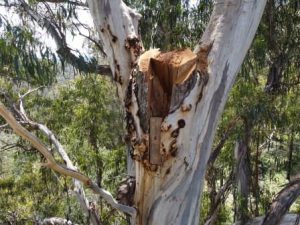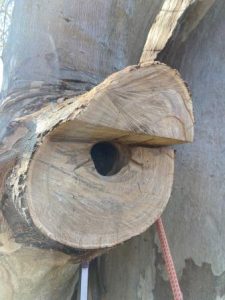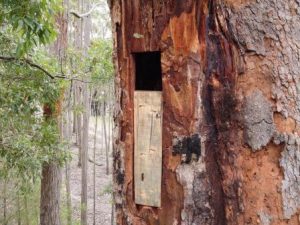
Hollows can be accelerated or modified to make them more useful sooner rather than later. A normal hollow may take hundreds of years to form suitable habitat for a home. Or some hollows may simply collapse and have never had the right mix of criteria for a good hollow home – what a waste of a good opportunity!
Treetec arborists and ecologists can identify suitable swellings, wounds and damage on trees that may be able to be enhanced or modified to form immediate hollows suitable for an range of wildlife species. All whilst caring and managing the trees health and longevity as a wildlife home.

Treetec arborists and ecologists can come and assess your property for a range of potential hollow sites dependant on your property parameters and species present. No 2 sites are the same and we will work with you to deliver the best outcomes using a variety of introduced hollow and nest/log box techniques.
Contact us for more information.

